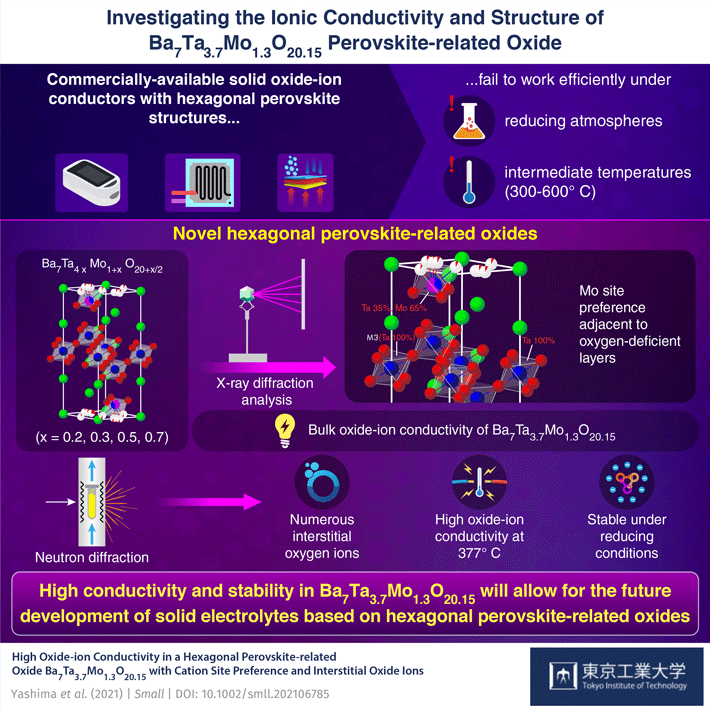The ever-increasing demand for clean energy and high-performance devices in the modern technological era has called for the development of alternate energy materials. In particular, oxide-ion conductors have garnered a lot of attention on this front. The presence of highly mobile oxide ions in their crystal structure imparts unique electronic properties to these materials with potential applications in the design of solid oxide fuel cells (SOFCs), a promising technology for generating clean energy.
To develop efficient SOFCs, solid oxide-ion conductors with high conductivity and chemical and electrical stability are necessary. Unfortunately, conventional oxide-ion conductors do not show sufficient conductivity below 700°C. An alternative material with high ion conductivity at lower temperatures (300 – 600 °C) is, therefore, highly sought after.
Fortunately, perovskite-type oxides could come to the rescue. In particular, hexagonal perovskite derivatives composed of barium (Ba), molybdenum (Mo), and niobium (Nb) oxides have been reported to exhibit high ionic conductivity. However, certain drawbacks still remain: the amount of oxygen in the interstitial spaces of the crystal structure, necessary for high conduction, is still low, electronic conduction competes with and hampers ionic conduction in a reducing atmosphere, and diffraction techniques are unable to shed light on the underlying oxygen migration mechanism.
In a recent study published in Small, a team of researchers led by Prof. Masatomo Yashima from Tokyo Institute of Technology (Tokyo Tech), Japan, addressed these issues. The team developed a new hexagonal perovskite-related oxide, Ba7Ta3.7Mo1.3O20.15, which showed excellent ionic conduction at intermediate and low temperatures. "We aimed to design materials that allowed for the introduction of a large number of interstitial oxygens into their structure and showed high conductivity at intermediate and low temperatures. Additionally, the ion conduction remained dominant in a reducing atmosphere," elaborates Prof. Yashima. This study came from collaborative research done by Tokyo Tech, Japan, Kojundo Chemical Laboratory Co. Ltd., Japan, and the Australian Nuclear Science and Technology Organisation (ANSTO), Australia.
The team then carried out structural analyses of the materials using a combination of synchrotron X-ray and neutron diffraction data and numerical calculations. They found that introducing tantalum (Ta) into the structure resulted in improved stability and a larger number of interstitial oxygens compared to the other hexagonal perovskite-related oxides. Additionally, the analyses and calculations showed that the Mo ions preferentially occupied the oxygen-deficient layers responsible for the oxide-ion conduction.
The team is delighted with these findings and Prof. Yashima is optimistic about their practical ramifications. "The results obtained in our study could provide an effective strategy for the development and commercialization of SOFCs," he expects.
Some fascinating consequences to contemplate, for sure!
. Any information published on this site will be valid in relation to Science Tokyo.




